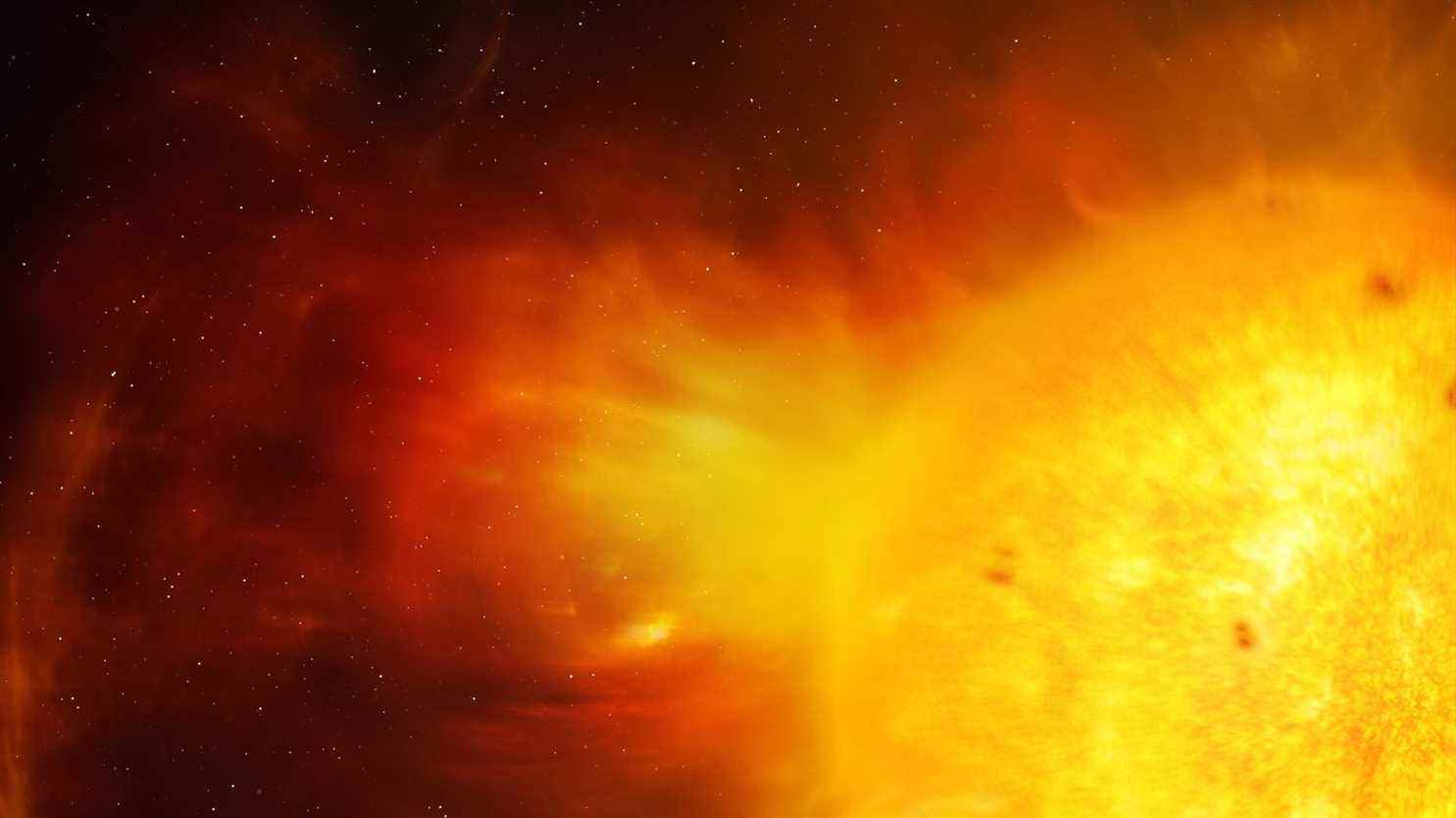She didn’t burn her wings. The Parker space probe, launched in 2018, entered the Sun’s atmosphere, the American geophysical society announced Tuesday, December 14, at a press conference. This is’“a monumental moment for solar science and a remarkable feat”, commented (link in English) L’associate administrator of the NASA Scientific Missions Department, Thomas Zurbuchen.
This is the first time that a “touches” the Sun, by penetrating into the solar corona, this luminous halo hitherto unexplored, in particular because of its inhospitable temperatures: up to 2 million degrees.
“Not only does this achievement allow us to deepen our knowledge of the evolution of the Sun and its impact on our solar system, but everything we learn about our star also teaches us about the other stars in it. ‘universe”, rejoiced Thomas Zurbuchen.
The scientific feat occurred on April 28, but it took several months to collect and process the data transmitted by the Parker probe. Michael Stevens, an astrophysicist at the Center for Astrophysics, Harvard & Smithsonian who participates in the monitoring and analysis of this data, explains in a press release. (link in English) that “a fundamental part ” of this mission was to be able to measure whether “the spaceship [avait traversé] the outer limit [du Soleil], that scientists call the Alfvén point “. However, until now, the latter did not know exactly where this border was.
“If you look at close-up photos of the Sun, sometimes you’ll see those curls or shiny hairs that seem to come off, but then reconnect., he explains. This is the region in which we flew; an area where plasma, atmosphere, and wind are magnetically linked and interact with the Sun. ” During these flights, the data collected allowed scientists to confirm that this Alfvén point did not surround the star like a bubble, but irregularly, explains NASA. “Finding out where these protrusions line up with solar activity coming from the surface can help scientists understand how what happens on the surface of the Sun affects the atmosphere and solar wind“, continues the agency.
During the day of April 28, the probe was able to make three “inputs” in the solar corona, including once for five hours, details this article published in the scientific journal Physical Review Letters. His objective for the rest of the mission? Continue to approach the surface of the star, notes NASA.
